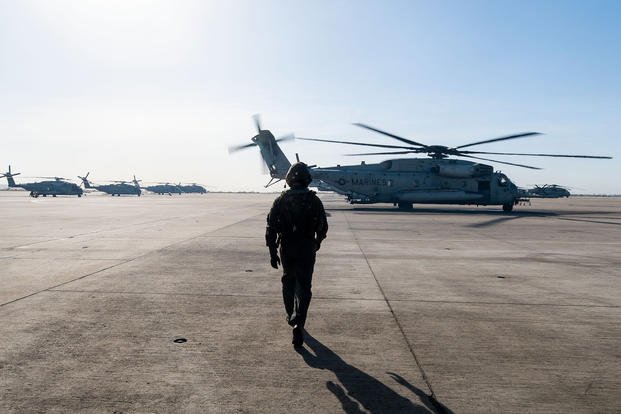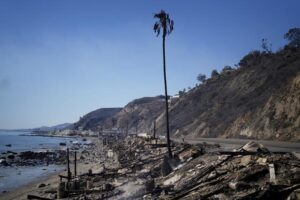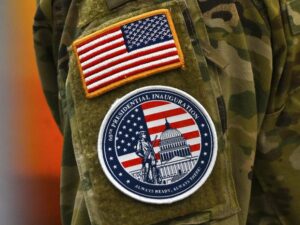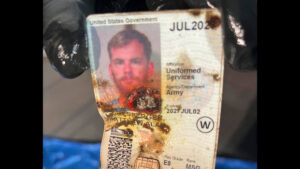Marine Helicopter Makes Emergency Landing Following Engine Fire Near Camp Pendleton
Friday afternoon saw an unexpected incident involving a Marine Corps helicopter when its engine burst into flames, compelling the crew to execute an emergency landing near Camp Pendleton, Southern California. The aircraft, a CH-53E Super Stallion, is the military’s main heavy-lift helicopter.
The incident occurred at 4:11 p.m. West Coast time, as the helicopter’s engine caught fire mid-flight. Fortunately, the pilots managed to guide the aircraft to a safe landing zone on the base, adjacent to Interstate 5, before the flames could spread. The helicopter is part of the 3rd Marine Aircraft Wing, and all four crew members emerged unscathed, as confirmed by a wing spokesperson to Military.com.
Emergency response teams from both the Marine Corps and local agencies swiftly arrived to contain the blaze. Meanwhile, authorities advised the public to steer clear of the affected area due to potential traffic congestion, with the California Highway Patrol posting images of the fire on social media and warning of possible travel delays.
While the root cause of the fire remains undetermined, Capt. Stephanie Davis, a spokesperson for the 3rd MAW, mentioned that a mishap board has been assigned to investigate the incident. The helicopter in question is associated with Marine Heavy Helicopter Squadron 466, she added.
Renowned for transporting up to 55 troops and 16 tons of equipment, the nearly 70-ton Super Stallion plays a crucial role in the Marine Corps’ logistical operations, as detailed here. Recently, the helicopter has been utilized as an alternative to the V-22 Osprey, which faced grounding due to mechanical and safety issues.
Historically, the Super Stallion has been involved in numerous severe incidents. From 2012 to 2023, it experienced 16 “Class A” mishaps, characterized by fatal outcomes, permanent injuries, or damages exceeding $2.5 million, as reported by Military.com.
Among the tragic occurrences, a collision between two such helicopters off Hawaii’s coast in 2016 resulted in 12 fatalities, and a 2018 crash near El Centro, California, claimed four Marines’ lives. In the most recent fatal crash this February, five Marines died when their Super Stallion went down east of San Diego during a routine mission from Creech Air Force Base.
The aftermath of these incidents continues to unfold, with the Marine Corps Times reporting the recent firing of a squadron commander due to “loss of trust and confidence,” nine months post-crash. Investigations are still in progress.
Additionally, in October, another Super Stallion incident at Marine Corps Air Station Yuma, Arizona, resulted in minor injuries. The helicopter was deemed repairable after a crash during takeoff, according to data from the Naval Safety Command.











